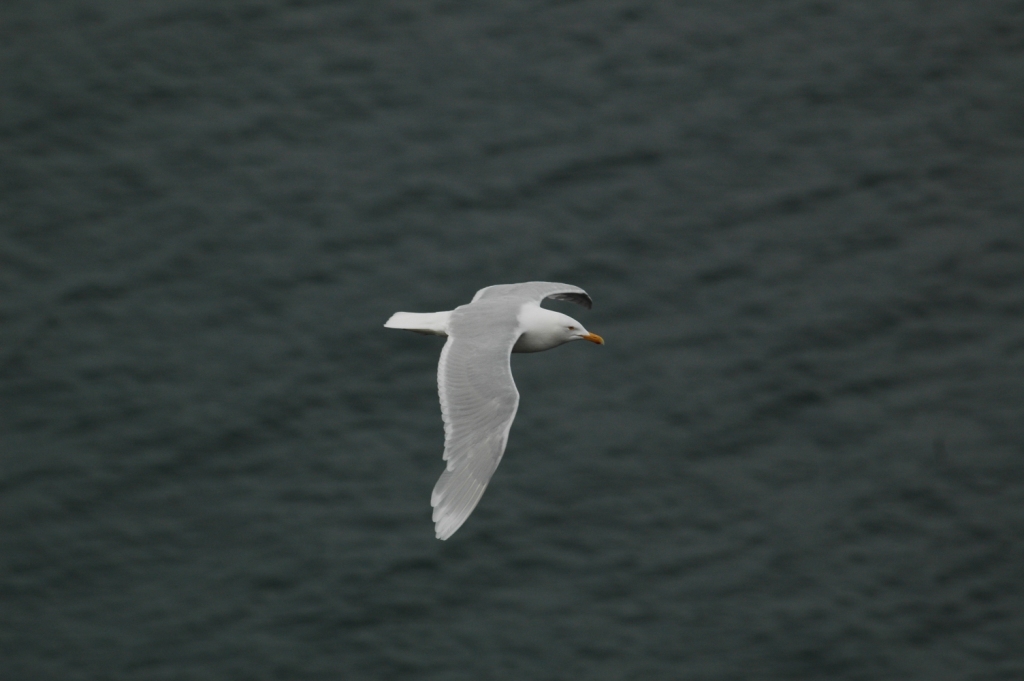
Dovekies, with a burst of their hysterical “laughter”, explode from their nesting sites in the scree slopes of Svalbard.
The Glaucous Gulls sit on the updraft caused as the wind hits the side of the ship and veers upward. They have been following the vessel all day just “sitting”, waiting. But Dovekies have been few and far between in this stretch, a couple of hundred miles off the east coast of Labrador. But when the conditions are right – i.e., there’s small krill-like organisms close to the surface – then the Dovekies will appear, sometimes in big numbers.

Glaucous Gull – a deadly Arctic predator around seabird colonies and seabirds generally. -L. Jolicouer
After a couple of hours I have come to disregard these large predators hanging just a few meters away on the other side of the bridge glass as I focus on counting other seabirds ahead and to the port side of the vessel. But then….one, then another dives frantically at the billowing sea and, following their trajectory with my binos, I watch a little Dovekie dive beneath the surface and out of the reach of the attacking gulls. For the next hour or so I see this played out time and again: a frantic rush by the gulls and a disappearing Dovekie. Sometimes though the little birds, instead of diving, take to the air. They have a high wing loading so it’s a chore for them to get airborne, slow and labourious. But once up they can fly at quite a speed. The thing to do (if you’re a gull) is get them as they rise from the water and are slow and sluggish. Twice I watched as a Dovekie tried to rise and a gull rushed in behind. But, at the last moment, the little bird, seeing its folly, stopped flapping and just dropped back into the sea and dove. A close call!
Dovekies breed in the high Arctic. When I was in Svalbard I saw them in their nest sites high up on the scree slopes of the mountains. They nest in rocky crevices or holes deep enough that marauding Arctic Foxes can’t get to them. When the young is hatched the adults take to the sea to gather krill which they store in their gullar sacs to bring back to the hatchling. They are quite vocal and sociable around their nesting colonies but when a Glaucous Gull passes by, even if it’s a long way off or very high, they take to the air en masse. They’re not going to take any chances. An unwary bird often ends up as dinner.
I watched well over a dozen gull attacks but never saw a successful one. After being foiled the hapless gull would return to its “perch” on top of the updraft beside the ship and wait for the next opportunity. On a couple of occasions though I saw a gull fly off well ahead of the vessel. In one instance one returned with quite a distended crop. Maybe it had been successful (and a Dovekie less so). In all my Fall seabird counting outings I have never seen this before.
Rick


